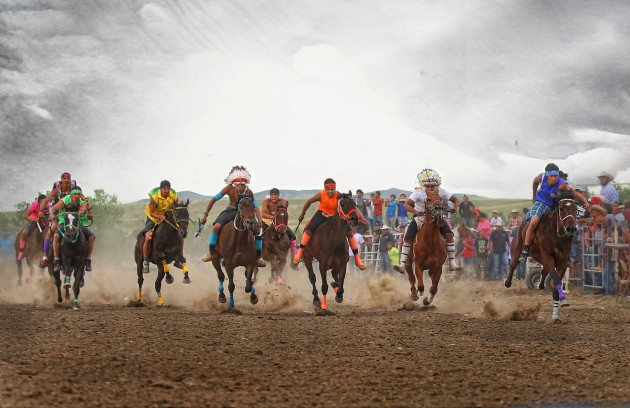Rachel Lee Harris of the New York Times recently published the following article, calling 2015, the year of the “Niche Athlete”, the “Retroactive Sport” and the “Shirtless Uniform”. What more can you ask for, 2015 will be a great year for all kinds of competitions. Her article is re-printed below exactly as it ran in the January 7th edition of the New York Times.

Riders in Indian relay horse races jump from one galloping animal to another. Credit Diana Volk. via NY Times.
This is the year of the niche athlete, the retroactive sport, the shirtless uniform. It’s an opportunity to travel to remote destinations to watch those who believe that competing with the elements, as well as with one another, makes for a neat challenge.
Since its public outing as a demonstration sport at the Winter Olympics in Sochi, competitive ice climbing has hit new highs with spectators, which the International Climbing and Mountaineering Federation (U.I.A.A.) hopes to parlay into a bona fide slot at the 2018 games in Pyeongchang, South Korea.
Though most know it as a misfit fusion sport for millennials, stand-up paddle boarding has been doggy-paddling toward legitimacy as a competitive sporting event for the last three years at the International Surfing Association’s annual World StandUp Paddle and Paddleboard Championship. The fourth annual (May 10 to 17) moves from Nicaragua to Sayulita, Mexico, an easy-to-reach destination that the I.S.A. hopes will draw more fans and provide choppier waters for competitors. The true test of legitimacy? If Hawaii, which competes separately from the United States and is considered one of the best teams in the world, joins in to give the reigning Australian champs a run for their money.
Scotland’s Cowal Highland Gathering on Bute island in the Firth of Clyde (Aug. 27 to 29), on the other hand, does not want for crowds. After more than a hundred years it has established itself as the biggest display of traditional Highland Games in the world. Sturdy kilt-wrapped men and women tossing trees and lead balls are at the heart of it all, but in recent years the simultaneous World Highland Dancing Championship has begun to overshadow the games with hundreds of dancers from all over the world competing for titles each day. (Needless to say, there will be no shortage of pipers to accompany them.)
Relay horse-racing, another sport deeply rooted in tribal culture, considers itself the oldest extreme sport in North America, according to the Professional Indian Horse Racing Association. The races, during which riders jump from one horse to another while galloping at high speeds, are believed to date back more than 400 years to when American Indians honed their relay skills for war, to hunt buffalo or to capture wild horses.
They’ve continued since, though mostly in small numbers on reservations in the northern Plains or at rodeos, but a recent boost in interest inspired the association to sponsor the first All Nations Indian Relay Championships in 2013. The next, in Sheridan, Wyo. (Sept. 11 to 13) will feature 30 teams from at least 12 nations.
Speaking of powerful animals, it shouldn’t be surprising that Red Bull, the energy drink maker, has become the de facto sponsor of almost every sporting event designed to make a viewer’s heart stop. Luckily, most are set in relaxing environments like Bilbao, Spain, where the Red Bull Cliff Diving World Series will have divers dropping from the La Salve Bridge to fall 80 feet against the backdrop of the Guggenheim Museum and into the Nervión River.
For something a bit closer to the ground (though not by much) Red Bull also sponsors the Art of Motion, a free-running and parkour showcase of athletes who bounce, tuck, roll and leap over the rooftops of Santorini, Greece (Oct. 3).



